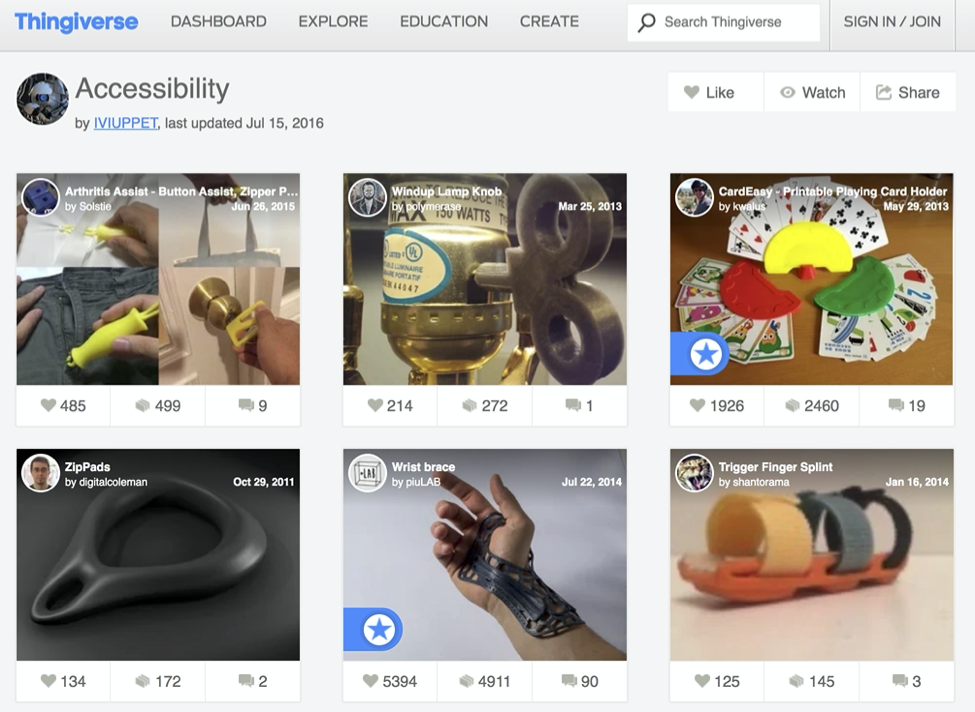background-image: url(img/people.png) .left-column50[ # Welcome to the Future of Access Technologies CSEP 590b, Winter 2023 ] --- background-image: url(img/people.png) .left-column50[ # Week 1: Accessibility CSEP 590b, Winter 2023 ] --- name: normal layout: true class: --- # Important Reminder ## This is an important reminder ## Make sure zoom is running and recording!!! --- .left-column-half[ # Jennifer Mankoff Pronouns: She/her [Make4All Lab](http://make4all.org) I use technology to improve inclusion in and accessibility of our digital future. - Assistive and health technology - Fabrication/Physical computing - Improve inclusion and accessibility ] .right-column-half[  ] --- .left-column-half[ # Kelly Mack Pronouns: she/her I design technologies that support people with fluctuating abilities and multiple people with disabilities. - Accessibility of higher education - Accessibility for people who are chronically ill - Slide show accessibility ] .right-column-half[  ] --- # Let's get to know you! Warm up <iframe src="https://embed.polleverywhere.com/free_text_polls/a9IB2f7eI03nSY1rX7LFe?controls=none&short_poll=true" width="800px" height="600px"></iframe> --- # Let's get to know you! Discuss with at least two neighbors: - Do you know whether your favorite app is accessible? - Why do you want to learn about accessibility --- [//]: # (Outline Slide) # Learning Goals for today - What is Accessibility? Disability? Models of disability? - History of disability rights - Understand terms about and models for disability-centered design - What is Disability Justice ---  --- ## Disability: A context-dependent .red[mismatch] .left-column50[ **1980**  **Disability as a personal attribute** "restriction or lack of ability ... within the range considered normal for a human being" (medical model: How do we *fix people*) ] .left-column50[ **Today**  **Disability as a social/environmental attribute** "the interaction between features of a person's body and features of the society in which they live" (social model: how do we *fix society*) ] --- # Neither is quite right - Medical Model (how do we *fix people*) - Social Model (how do we *fix society*) Postmodern: Disability doesn't need to be fixed, but celebrated as part of human variation --- # Worldwide Stats 1 Billion (~15%) of population [WHO'11]; <br> 19% of USA [Census'12] | Visual | Hearing | Cognitive | Speech | Mobility | Neural | |--------------------------------------------------------------------------------------------------------|-------------------------------------------------------------------------------------|-----------------------------------------------------------------------------------------------------------------------------------|--------------------------------------------------------------------------------------------------------------------------------------------------------------------|-----------------------------------------------------------------------------------------------------------------------------------------------------|-----------------------------------------------------------------------------------------| |  |  |  |  |  |  | | Ray Charles | Marlee Matlin | Temple Grandin | President Biden | Ali Stroker | Catherine Zeta-Jones | | <i>Colorblind<BR>Low Vision<BR>Blind </i> | <i>Hearing loss <BR> Deaf </i>| <i>Dyslexia <BR> Seizure <BR> Learning Disabilities <BR> Autism </i> | <i>Stutter </i> | <i>Quadriplegia </i> | <i>Bipolar<BR>Anxiety<BR>PTSD<BR>Depression </i> | --- # Worldwide Stats .left-column60[ 1 Billion (~15%) of population [WHO] 19% of USA [Census'12] Rates of disability are increasing - Aging population - Situational Impairment - Increasing numbers of people with chronic illness (can span disability segments) ] .right-column40[ | Parkinson's Disease | ALS | | --- | --- | |  |  | Michael J. Fox | Prof. Stephen Hawking | | Parkinson’s affects <br>cognition, speech and mobility | ALS affects mobility and speech | ] --- # Accessibility .row[ .column[**Disability** is a mismatched interaction between someone and their context] .column[**Accessibility** is a broad term for tools that help people navigate mismatched interactions and provides options for people of all ability] .column[**Inclusive design** is a framework that helps us design more accessible products] ] .row[  ] --- .left-column50[ # Accessibility technology .quote[[anything] ... used to increase, maintain, or improve functional capabilities of individuals with disabilities] (Wikipedia) What model is this arguing for? [talk to your neighbor & [Vote](https://PollEv.com/multiple_choice_polls/1piiNRJmdxyR7milxVSEN/respond)] ] .right-column50[  ] --- # Accessibility technology: Voting Results <iframe src="https://embed.polleverywhere.com/multiple_choice_polls/QPOLDUk0jGfyuig3w8jig?controls=none&short_poll=true" width="800px" height="600px"></iframe> --- .left-column50[ # Accessibility technology How people with disabilities *may* navigate computers (and the world) Used to be called "assistive technology" but that language is ableist One solution, not parallel solutions ] ??? Not a *medical* device A broader view than Wikipedia -- .right-column50[ .left-column[ ] .right-column90[ .font-medium[Screen Readers] <BR> .font-mediumsmall[Narrator, VoiceOver, JAWS, Window Eyes, NVDA, TalkBack] .font-medium[Screen adjustment]<BR> .font-mediumsmall[ZoomText, Magnifier, Zoom, High Contrast<BR>] .font-medium[Speech input]<BR> .font-mediumsmall[Dragon Naturally Speaking, Dictation, Speech Recognition] .font-medium[Keyboarding]<BR> .font-mediumsmall[Sticky Keys, Mouse Keys, Filter Keys, Keyboard Shortcuts] .font-medium[Many more]<BR> ] ] --- # Lots of software for this .left-column50[ - Magnifier – make whole screen or a portion bigger - Can also just use larger fonts, lower resolution - Change colors and contrast - Free Screen Reader – read the words on the screen - On-Screen keyboard - Can be scanned - Built-in speech recognition ] .right-column50[ Most Operating Systems (laptops and smartphones) have a whole collection of adaptations ] ??? lots of software for this Adaptations for mouse - Make mouse easier to see - Move mouse with the keyboard Adaptations for keyboard - Sticky Keys – so no need for chords - Work like on Smartphones --- # Example: Single Switch Access .left-column50[ Can point to on-screen keyboards with various mechanisms, or use scanning keyboards - e.g. sip and puff to select On Screen Keyboard - Usually add auto-complete and *auto-predict* .footnote[Auto-predict: Predict next word based on previous words with no letters typed] ] .right-column50[ ![:youtube Video of person using switch input to make a video using a drone,YoM0Gua3UO4] ] ??? Other options: [youtube Video](https://www.youtube.com/watch?v=2BhHwk9qSvI&t=148s) --- # Lots of exciting advances still happening .left-column[ - Vizwiz (Bigham) ] .right-column[  ] --- # Lots of exciting advances happening .left-column[ - Vizwiz - Thingiverse (Hurst) ] .right-column[  ] --- # Lots of exciting advances happening .left-column[ - Vizwiz - Thingiverse - Facade (Guo) ] .right-column[  ] --- # Lots of exciting advances happening .left-column[ - Vizwiz - Thingiverse - Facade - [Voice Assistants](https://voicebot.ai/2019/09/11/amazon-alexa-ad-shows-how-voice-assistants-help-visually-impaired-people/) (Findlater) ] --- [//]: # (Outline Slide) # Learning Goals for today - What is Accessibility? Disability? Models of disability? - **History of disability rights** - Understand terms about and models for disability-centered design - What is Disability Justice --- .left-column60[ ## Accessibility is not a given Originated in the disability rights movement History of protest Collaboration with Black Panther movement Watch 2 minutes: [Review of](https://www.nbc.com/today/video/crip-camp-filmmakers-discuss-legacy-of-camp-jened/4336921) the documentary film [Crip camp](https://cripcamp.com/) ] .right-column40[] --- # Legal Basis for Accessibility **Individuals with Disabilities Education Act** (IDEA, 1975): Free appropriate public education in the least restrictive environment to every child with a disability. **Rehab Act** (1976): Equal access to government services **Americans with Disabilities Act** (1990): Equal access to all goods/services **UN Convention on Rights of PD** (2006): 147 countries ratified convention Ongoing and constant legal challenges, especially to the [ADA](http://www.webaim.org/coordination/law/us/ada) ??? 1996 ADA complaint against San José Use of PDF inaccessible to city commissioner Web sites are a “service” and thus subject to the ADA Led to S. J. Web Page Disability Access Standard 1999 Natn’l Fed. of the Blind against AOL Based on the interpretation of the Web as a place of public accommodation (ADA) Settled out of court 2000: AOL agreed to make its browser accessible Many others (http://www.webaim.org/coordination/law/us/ada) --- # Human Rights Basis for Accessibility .right-column50[ .row[  .centerv[Education]] .row[  .centerv[Employment]] .row[  .centerv[Pandemic everything!]] ] .left-column50[ .row[  .centerv[Shop From Home]] .row[  .centerv[Blind People Read <BR>7x as Many Books]] ] --- # Practical Basis for Accessibility .column[ .centerh[  ] In 1808, Pellegrino Turri built the first typewriter, so that his blind lover, could write letters more legibly. ] .column[ .centerh[  ] Speech recognition, text to speech, and word-prediction technologies were all initially developed for people with disabilities. ] .column[ .centerh[  ] In 1937, Joseph Friedman created the first bendy straw to help his young daughter drink from a cup on a counter that was too high for her. ] --- # Tropes & ways things can go wrong - Hero complex (I can save you with this new technology) -- - Disability inspiration [stop at 4:29] ![:youtube Ted Talk Stella Young is a comedian and journalist who happens to go about her day in a wheelchair — a fact that doesn't; she'd like to make clear; automatically turn her into a noble inspiration to all humanity. In this very funny talk; Young breaks down society's habit of turning disabled people into "inspiration porn.",8K9Gg164Bsw] --- # A note on language .left-column[  ] .right-column[ Identity-first language (“disabled people”) vs. people-first (“people with disabilities”). Preferences change depending on region, cultural context, community Avoid “stricken with”, “suffers from” or victimization language Avoid “able-bodied” or “normal” as differentiating terms ] --- # Watch and Analyze ![:youtube At Apple; we believe accessibility is a human right. Innovative features like Door Detection; Sound Recognition; Voice Control; and more are designed to let you use your devices in ways that work best for you, 8sX9IEHWRJ8] hero complex? disability inspiration? language issues? all good? Small group discussion; Summarize your discussion on [Ed](https://us.edstem.org/courses/31170/discussion/2342965)